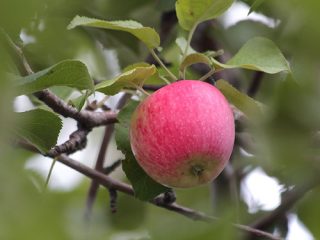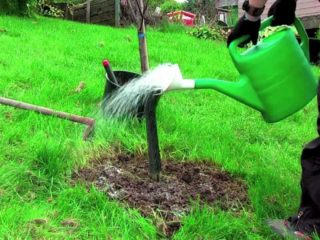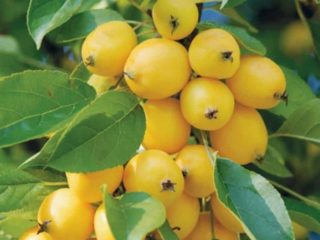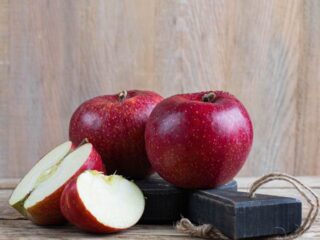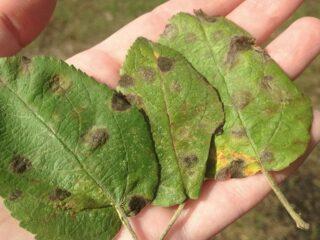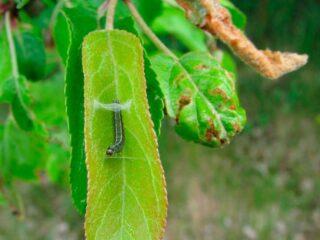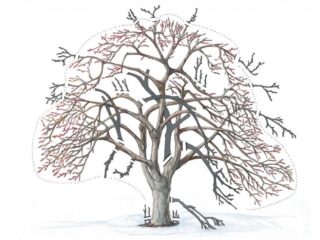Content
The Uralets apple tree has not lost popularity among gardeners for more than half a century. This early autumn variety is known not only for its increased frost resistance, unpretentiousness and high yield, but is also distinguished by the excellent appearance of the tree and the quality of the fruit.
History of origin
The Uralets apple tree variety appeared in the second half of the twentieth century at an experimental horticultural station in the city of Sverdlov. To create it, the outstanding Soviet breeder P. A. Dibrov used pink-striped anise, Chinese Voskovka and Ukrainka Saratovskaya as the starting material. The variety has been on the State Register since 1959.
Description of the Uralets apple tree
An apple tree of the Uralets variety can become a real decoration of the garden. A slender, tall tree with a dense crown in late spring is covered with abundant pink buds, blooming with magnificent white flowers. Fruits abundantly, with medium-sized, neat apples with a bright pink blush.

The Uralets apple tree, strewn with medium-sized pink-red fruits, looks very elegant
Crown
The pyramidal or narrow pyramidal crown of the Uralets apple tree is formed by curved branches, at the base located at right angles to the trunk, and then growing upward. Thanks to their special flexibility and strength, its branches are able to withstand even the largest harvest.

Among other representatives of this culture, the Uralets apple tree stands out for its tallness.
The tree can reach a height of 8 m, the trunk diameter is up to 60 cm.
There is also a standard variety of the Uralets apple tree. It has a long trunk and a compact spherical crown. Its height does not exceed 3–4 m. In terms of other characteristics of the Uralets variety, the standard tree is not fundamentally different from the usual shaped apple tree.
Adult branches are covered with brown bark, young shoots are dark brown, with strong pubescence. The leaf blade is medium in size, serrated along the edges. A matte green leaf with a rounded base and a sharp tip is located on a short stalk.
The Uralets apple tree blooms with white flowers blooming from pink buds. The flowers are cup-shaped, medium in size.
Description of fruits
This apple tree bears small fruits with an average weight of about 55 g. The apples are round in shape, with a slight truncation. The surface is smooth, even, with a waxy coating. The color is predominantly creamy with frequent bright pink stripes forming a dense blush.
The pulp is creamy, light, with a lot of juice.
Characteristics of the Uralets apple tree
Due to increased frost resistance, easy care, high yield and immunity to the most common crop diseases, the Uralets apple tree is an excellent choice for both amateur gardeners and for cultivation in garden farms.
Taste qualities
The taste of Uralets apples is sweet and sour, spicy, slightly astringent. The fruits are suitable for both fresh consumption and processing. Thanks to their juicy pulp, they can be used to make juice, jam, compotes and other preparations.
Ripening time
The Uralets apple tree is an early autumn variety. Depending on climatic conditions, the harvest period ranges from early September to the first ten days of October. In the southern regions, apple fruits of this variety reach maturity in the second half of August.
Productivity
The first harvest from the Uralets apple tree is harvested 4–6 years after grafting. Full fruiting can be expected in another 2–3 years. It is regular, increasing with each season and does not depend on weather conditions. Up to 70 kg of apples are harvested from one mature tree.
Frost resistance of the Uralets apple tree
The Uralets apple tree is characterized by increased frost resistance. In terms of its ability to withstand cold, it is second only to the Gornoaltaiskaya variety and can withstand temperatures down to -35°C. During particularly cold winters, young shoots that have not yet reached maturity sometimes freeze. Apples fall only when temperatures reach below zero.
Pollinators
When growing the Uralets apple tree, you should keep in mind that this variety is not capable of self-pollination. It is necessary to plant apple trees of the Gorno-Altaiskoe or Uralskoye nalivnoye variety nearby. These are the best pollinators for the Ural.
Growing regions
The variety was bred for cultivation in the northern parts of Russia, excellent for Siberia, the Ural region, and the Volga-Vyatka region. However, if agricultural practices are followed, apple trees of this variety thrive in any climatic zone of the country.
Disease resistance
The Uralets variety is extremely resistant to many crop diseases. It is practically not affected by scab and fruit rot, but it can suffer from codling moth. As a preventive measure, it is enough to promptly remove plant debris from under trees.
Advantages and disadvantages
Uralets apples have excellent taste, high content of nutrients and look very attractive.

Many housewives claim that apples make the most delicious compotes.
This variety has many advantages:
- outstanding frost resistance;
- low susceptibility to diseases;
- early fruiting;
- excellent yield;
- high consumer properties of apples.
Small fruits and their poor keeping quality are often noted as disadvantages.
Planting the Uralets apple tree
Like other representatives of this culture, the Uralets apple tree is propagated by seedlings. Trees that have reached two years of age are best suited for planting - they take root well and quickly begin to bear fruit.
Although the Uralets variety is very unpretentious, this fruit tree feels best on the south-eastern and eastern slopes with light fertile soil. It is ideal to plant apple trees in light loam or turf soil.
When planting a garden, you should remember that excessive moisture is detrimental to the root system of apple trees. For this tall tree with a developed root system, groundwater must lie at a depth of at least 3 m.
Garden culture needs a lot of light, so it is better to locate the garden in sunny areas, not shaded by buildings and other plantings.
Since the Uralets variety is tall, it is necessary to maintain a distance of 5 to 7 m between trees.
Typically, seedlings are rooted in the fall, from the end of September until the onset of cold weather. Spring planting begins in early April and is completed before active growth begins.
The algorithm for planting a seedling is as follows:
- 3-4 days before planting, dig a hole.
- The soil is mixed with peat, humus, and manure. It would be useful to add a handful of wood ash and a few spoons of potassium-phosphorus fertilizers.
- Fill the hole with nutrient substrate to more than half the volume and compact it well.
- The seedling is placed in the hole so that the neck is above the soil surface. The roots are straightened, distributed evenly and covered with the remaining soil mixture.
- The young tree is well watered.
- Plantings are protected from strong winds, as they impair survival rate.

Planted trees are tied to a support
Caring for the Uralets apple tree
Uralets is an extremely unpretentious variety, but this crop still requires minimal care. To get a rich harvest, it is enough to do the following:
- Regular watering.In the first year, seedlings are moistened as often as possible. Mature trees need watering at least twice a week. It is especially important to provide flowering trees with sufficient moisture.
- Loosening and mulching after each watering.
- Feeding. They begin in the second year after planting the seedlings. Organic fertilizers are applied in spring, mineral fertilizers are applied in summer.
- Preventive treatment of plantings against diseases and pests.
- Sheltering trees for the winter.
- Formative and rejuvenating pruning. With abundant harvests, it is better to do more radical pruning, since on a heavily pruned tree the fruits are formed larger.
Collection and storage
Fresh apples can be stored for one to one and a half months. They must be placed in a cool room with high humidity. A cellar, basement, balcony or regular household refrigerator are ideal. Only apples with intact skins are suitable for long-term storage.
Plastic bags are suitable for storing crops. The fruits are placed in them and closed loosely.

If you additionally wrap each apple in paper, it will last longer.
The fruits of this variety are well transported.
Conclusion
The Uralets apple tree is a hardy, long-living fruit tree that does not require special care. Thanks to its outstanding frost resistance, it thrives almost throughout Russia and has not lost popularity among amateur gardeners and farm owners for many years.
Reviews from gardeners about the Uralets apple tree
https://youtu.be/9hlHVDr8Y68
